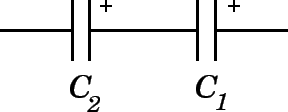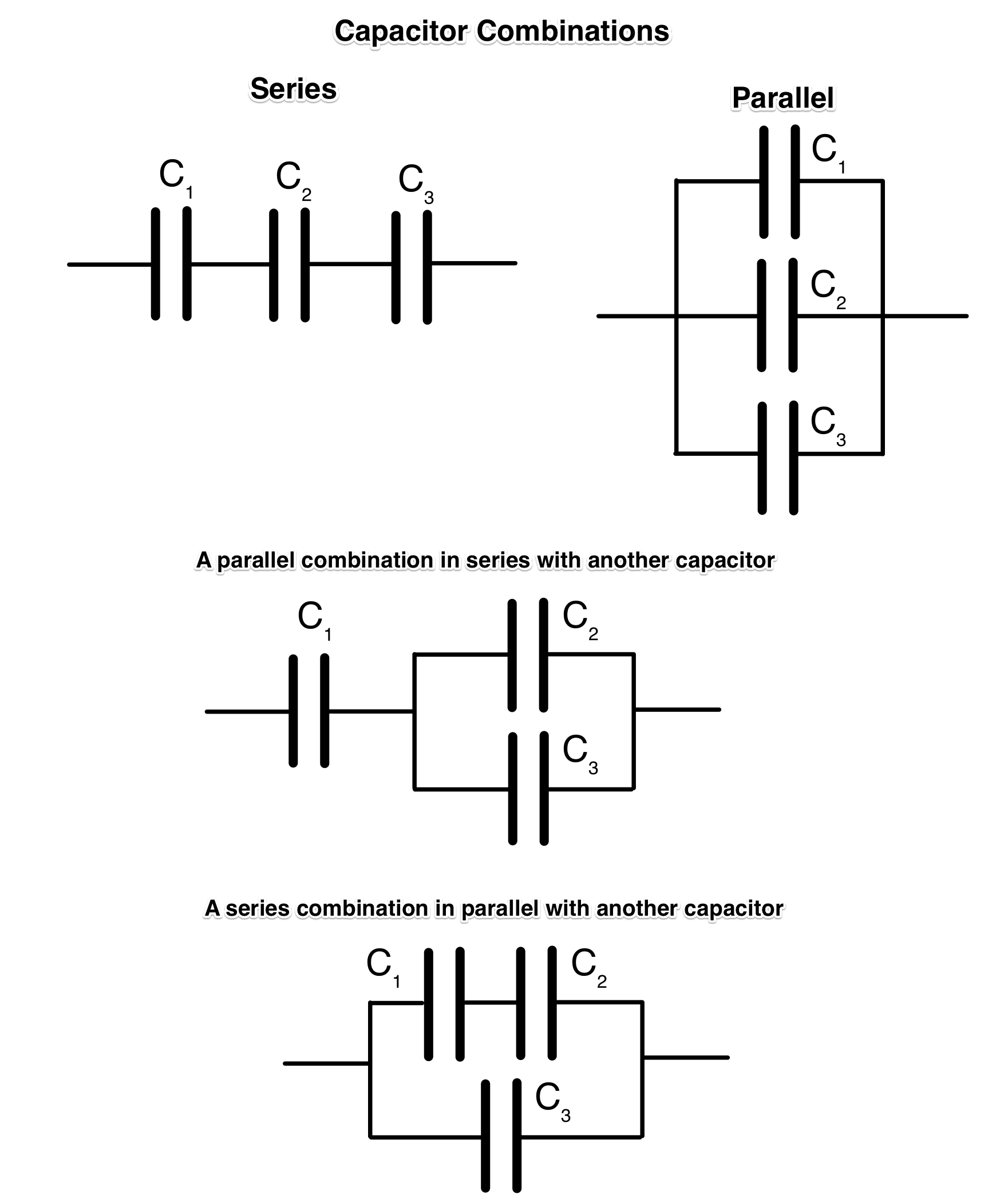Combination Capacitor Circuits
Key Questions
-
For capacitors in parallel:

The total capacitance
#C_(TOT# is given by:#C_(TOT)=C_1+C_2# Since
#C_(TOT)=Q/V# the total can be found from#Q=C_(TOT)V# where V is the voltage drop across the capacitors.For capacitors in series:

#1/C_(TOT)=1/C_1+1/C_2# So
#Q=C_(TOT)V# -
Series, parallel and combinations of series and parallel/

There are four examples of combinations in the diagram. The following points show how to calculate the total capacitance of each combination.
1. Series
The equivalent capacitance, C , of the combination is worked out as follows:#1/C=1/C_1+1/C_2+1/C_3#
or
#C=1/(1//C_1+1//C_2+1//C_3)# Total capacitance decreases in series.
2. Parallel
#C=C_1+C_2+C_3# Total capacitance increases in parallel.
3. "Parallel in series"
#1/C=1/C_1+1/(C_2+C_3)# 4. "Series in parallel"
#C=1/(1//C_1+1//C_2)+C_3#
Example with numbers based on combination 4.
#C_1=200muF# ,#C_2=400muF# ,#C_3=400 muF# #C=1/(1//(200*10^(-6))+1//(400*10^(-6)))+(400*10^(-6))# #⇒C=1/7500+400*10^-6=133*10^-6+400*10^-6# #C=533muF#